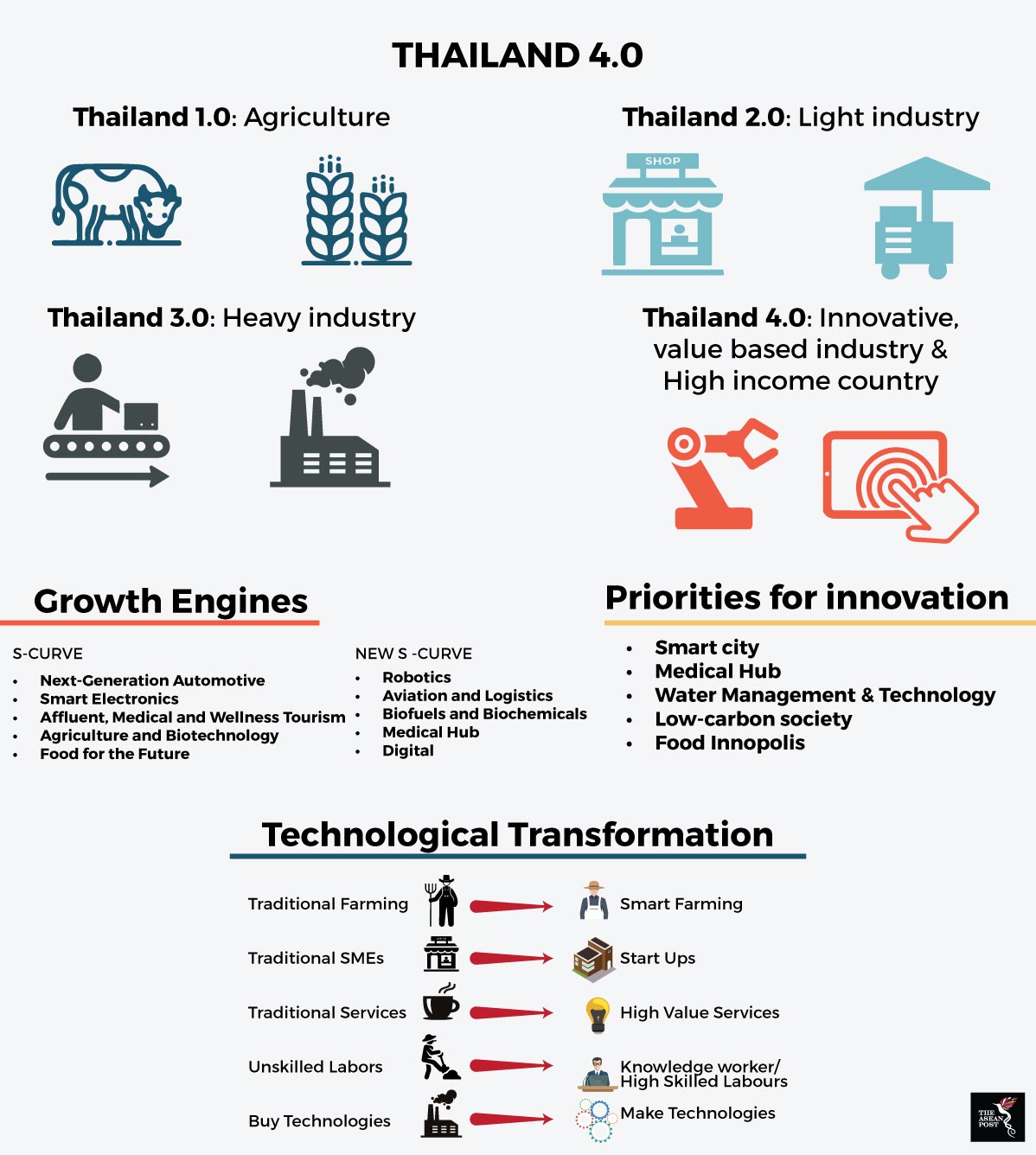The future of Thailand’s industrial sector lies in robotics and automation.
According to Varin Rodphotong, from the Centre of Robotics Excellence (CoRE), robots will significantly help improve the competitiveness of domestic industries in Thailand. He also more than welcomed efforts from public and private sectors to realise this shift to robotics.
“Without using robots, it is forecasted that 85 percent of domestic industries will lose their competitiveness in five years and 53 percent of SMEs may have to shut down. The cooperation between the public and private sectors in encouraging demand and supply of robotics and automation systems will increase the overall productivity of Thai industry by 50 percent with 200 billion baht (US$6.27 billion) worth of investment expected in the next five years,” he said.
Further development in this field will also see Thailand lose its reliance on imported industrial automation systems by 30 percent.
“By 2026 we hope Thailand will become an exporter of robotics and automation systems,” added Rodphotong.
Realising Thailand 4.0
The shift towards robotics and automation is critical towards achieving the goals of Thailand 4.0 – the kingdom’s economic model which aims to propel Thailand to becoming a high-income country.
Under this model, the government has identified several engines of growth which can be grouped into two categories – S-curve and New S-curve. The former refers to existing industries like smart electronics, agrotech and food technology which can be developed further using advanced technology. The latter includes new industries like aerospace and bio-energy that the country is just venturing into.

Robotics, falls under the New S-curve category which is expected to help bolster Thailand’s economic growth. Private sector interest in this field has spiked and suppliers and developers within this domain are joining forces to capitalise on this opportunity. To that end, several associations and institutes have been created including the Thai Automation and Robotics Association (TARA).
Vice President of TARA, Narakorn Ratchapolsitte believes that the dawn of automation is upon the kingdom.
“TARA's survey has shown that in the next one to three years, 50 per cent of Thai industries will have more readiness to adopt automation systems. In the short term, large companies are ready to go automated while small companies will need more than 5 years to do so. This means the trend for industrial robots and automated systems in Thailand is strong and well-established,” he explained.
“The future is bright and it's already here,” exclaimed Ratchapolsitte.
The investment end of the equation
The Thailand Board of Investment (BOI) has been promoting investment incentives related to this field. Speaking at a recent seminar on “Driving Thai Economic Development through the Automation and Robotics Industry”, Chokdee Kaewsaeng, BOI's Deputy Secretary General has been sensitive to the demand and supply sides of designing effective investment incentives – for old and new investment projects – that can foster the right financial ecosystem in the country.
On the supply side, BOI investment incentives related to robotics cover a variety of aspects like conceptual design solutions; engineering designs and system integration methods to control system configurations; procurement and manufacturing; as well as assembly, installation and commissioning. These incentives include waivers on import duties for machinery as well as exemption on corporate income tax. The demand side would enjoy similar perks. Incentives are given to both, new and existing investments. These include waivers on corporate income tax for three years as well as import duties.
According to official numbers, Thai Gross Domestic Produce (GDP) grew at 4 percent last year and is now slated to grow between 3.6 to 4.6 percent this year. The momentum of the economy is picking up and the opportunity is ripe for the robotics and automation industry to flourish.
Recommended stories:
